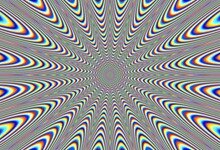
Mitsuharu Kaneko (1895–1975), one of the most prominent poets of twentieth-century Japan, is unique in many different ways. He was arguably the only poet in Japan who continued to write anti-war poems during the Second World War. In addition, he was an outsider to the homogeneous Japanese society, spending many years abroad and, more importantly, retaining the eyes and mind of an exile even after returning home. Furthermore, Kaneko was exceptionally intellectual for a Japanese poet, although his vast knowledge of classical Chinese and Western literature was usually concealed by his unpretentious, down-to-earth style. Finally, he loved women – probably even more than he loved poetry – and many of his poems, as well as his paintings, are charged with erotic love. But perhaps most unique of all is the fact that these distinctive traits fitted together so naturally in him, without any sign of contradiction.
New York-based translator and essayist, Hiroaki Sato, has chosen twenty poems from nine collections by Kaneko published between 1923 and 1968, allowing readers to sample the broad spectrum of the poet's oeuvre. ‘Bald’ is an apocalyptic poem Kaneko wrote on the day of his only son’s draft physicals (he helped his son feign asthma to escape the draft by having him inhale smoke). In ‘Seals’, Kaneko compares himself to a seal amongst fellow seals in the wake of Japanese military aggression. Despite being part of the crowd, his outsider status is emphasised: the seal is “looking the other way”. Early works such as ‘At the Lighthouse’ and ‘The Old Capital Nanking’, influenced by French symbolism and Chinese classics respectively, demonstrate his technical accomplishment. My personal favourite is ‘Another Poem'. Written in his late fifties, it is a shockingly honest yet humorous display of Kaneko’s eroticism:
My Love.
In the end I’ve become
your poop.
And in the narrow shitpot
I’m being tickled
along with other poops
by the larvae the flies bore.
(from ‘Another Poem’)
Hiroaki Sato has added meticulous footnotes to most of the poems, which are not only helpful for in-depth understanding of the texts but also enjoyable to read as short essays. The punctuation in Sato’s translations closely matches that of the originals, conveying Kaneko’s fragmented sentence structure inpoems such as the evocative and melancholy ‘Washbasin’:
Ears. You must listen.
To the desolation of the noises
in the washbasin.
(from ‘Washbasin’)
Sato has also written a biographical essay about Mitsuharu Kaneko. We hope you will enjoy the kaleidoscopic world of Kaneko's poems.
Selected Bibliography
Poetry
Kohro (The Censor), private edition, Tokyo, 1916
Sekido no ie (The House of Red Clay), private edition, Tokyo, 1919
Koganemushi (Japanese Beetle), Shinchosha, Tokyo, 1923
Dai-furan shoh (Ode to Great Putrefaction), unpublished, 1923
Mizu no ruroh (Wanderings of Water), Shinchosha, Tokyo, 1926
Fuka shizumu (The Shark Sinks), co-authored with Mori Michiyo, Shinchosha, Tokyo, 1927
Same (Sharks), Jinminsha, Tokyo, 1937
Rakkasan (Parachute), Nihon mirai-ha hakkosho, Tokyo, 1948
Ga (Moth), Hokutoshoin, Tokyo, 1948
Onna-tachi e no eregii (Elegies to Women), Sogensha, Tokyo, 1949
Oni no ko no uta (Songs of a Devil’s Child), Jyuhjiya Shoten, Tokyo, 1949
Ningen no higeki (Human Tragedy), Sogensha, Tokyo, 1952
Hijoh (Merciless), Shinchosha, Tokyo, 1955
Collected Poems (5 volumes), Shoshi Yuriika/Shoushinsha, Tokyo, 1960–1971
He no yoh na uta (Songs Like a Fart), Schichosha, Tokyo, 1962
IL, Keisoshobo, Tokyo, 1965
Wakaba no uta (Songs of Young Leaves), Keisoshobo, Tokyo, 1967
Complete Poems, Chikumashobo, Tokyo, 1967
Aijyo 69 (Love 69), Chikumashobo, Tokyo, 1968
Hana to akibin (Flowers and Empty Bottles), Seigashobo, Tokyo, 1973
Essays
Marei Ran’in Kikoh (Malay and Dutch East Indies Travelogue), 1940
Shijin (Poet), Heibonsha, Tokyo, 1957, an autobiography
Dokuro-hai (Skull Cup), Chuoh kohron sha, Tokyo, 1971
Nemure pari (Go to Sleep, Paris), Chuo kohron sha, Tokyo, 1973
Nishi higashi (West and East), Chuoh kohron sha, Tokyo, 1974


